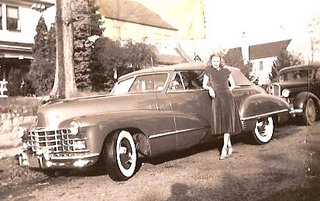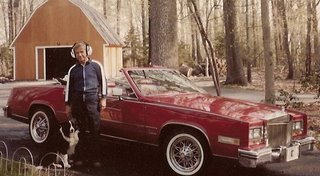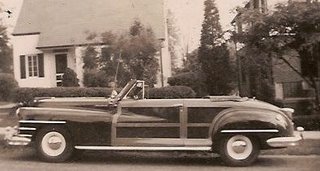
As I've mentioned earlier, I am considering getting a custom commuter pannier made to accommodate all of my bikes, including those with short chainstays and small racks. And I've been looking at different quick-release mounting systems in attempts to determine which one would be most suitable for such a project. I'd already tried
Basil and
Fastrider panniers, but not many others. So I stopped by the Wheelworks, in Somerville, MA and asked to examine and photograph the panniers they had in stock, which they most graciously allowed me to do. I now bring you a comparison of several different mounting systems, which I hope you will find useful.
 Ortlieb
Ortlieb panniers are made in Germany. They are waterproof, rugged and distinctly utilitarian-looking. I found myself attracted to this neon-yellow pannier and I think it actually looks kind of good on my
Gazelle. But still, overall the design is not really for me.

The mounting system, on the other hand, is fantastic. Most of the currently produced
Ortlieb panniers use the QuickLock2 (QL2) system, which accommodates the stout tubing of traditional Dutch and Roadster racks, and is extremely simple to use.

The QL2 mounting system consists of a top rail with hooks and a lower support hook - both of which are adjustable without the need for tools.

The top hooks release automatically when you pull the handle, and close around the rack's tubing when you let go of the handle. The placement of the hooks on the rail can be easily adjusted, as can the position of the rail itself. This comes in handy for those planning to use the same pannier on multiple bikes with different racks: Depending on the spacing of the perpendicular slats on the rack, and depending on the length of the bike's chainstays, the adjustability allows you to control the pannier's positioning. While the top hooks alone are enough to secure the pannier to the rack, the lower hook will prevent it from moving altogether. If only this great system was attached to more classic-looking bags! How about an olive satchel with brown trim,
Ortlieb?
 Arkel
Arkel panniers are made in Quebec, Canada. The look is similarly utilitarian, though the styling is distinctly different from that of
Ortlieb. The design of the bags doesn't really speak to me, but again these things are a matter of taste. While
Ortlieb makes it difficult to purchase their complete mounting kit,
Arkel sells it readily - which makes it a good resource for those looking to make custom panniers with a reliable and well tested mounting system.
 Arkel
Arkel's Cam-Lock attachment system works similarly to
Ortlieb's QL2, in that there is a top rail with adjustable hooks that release via lifting the handle, and a lower hook added for stability. However, the hardware is aluminum (
Ortlieb's is plastic), and the lower hook is attached via a bungee cord. Tools are required to adjust the position of the hooks on the track. To my eye, the
Arkel system looks kind of rough in comparison to
Ortlieb and takes a bit longer to figure out. Also, the aluminum hooks have sharp-ish edges and I could see them scratching up the paint on a rack.

However, the bigger problem is that the
Arkel hooks are not large enough to fit over the tubing of my
Gazelle's rack. I am certainly glad to have discovered this before having a custom pannier made using this mounting system. Looks like
Arkel is just not an option for me.

I have already described how the Dutch
Fastrider panniers work in my review of the one I own, but will reiterate here - as well as say that the more I use this pannier, the more I appreciate its design.

The
Fastrider mounting system features 3 heavy duty hooks that are plastic with metal bolts and springs. The central hook closes all the way around the rack's tubing, and the two outside hooks are for additional weight support. While the distance between hooks is not adjustable, the outside hooks
pivot - which means that they can be mounted even on the curved portions of a rack, allowing for greater versatility of placement.

Here is what I mean by that. Notice that the left hook is attached to the curved rear portion of the small
constructeur rack quite comfortably. Though there is no additional lower support hook like in the
Ortlieb or
Arkel systems, I find
Fastrider's 3 hook attachment to be quite secure, with minimal swaying. For a commuting pannier, it is certainly sufficient. And the hooks are versatile enough to fit both skinny and stout rack tubing - perfect! Unfortunately,
Fastrider products are not widely available in North America at the moment. The Bicycle Muse carries a few of the shopper panniers, but not the entire line.

Basil, on the other hand, is a Dutch manufacturer whose panniers are now easily available in North America. Their bags range from classic to utilitarian to quirky and they offer a great deal of choice.

This is what the mounting system looks like: Two hooks that may be either alloy or plastic (I can't tell) with a strip of velcro in the middle.The hooks are wide, non-pivotable, and the distance between them is not adjustable - which makes them incompatible with some racks. Like on the
Fastrider, there is no lower support hook - which, again, I think is just fine for commuting if the upper hooks are sufficiently secure.

I also like it that the Basil's system is designed with a zipper flap that covers the hooks when they are not being used. The panniers look like regular bags when not on the bike, and the hooks won't catch on your clothing as you carry them.

But to be honest, I find it difficult to trust the
Basil mounting system, because it seems to me that their design causes the hooks to be stressed every time they are used: The hooks have to be spread when attached to the rack, and spread again when detached.Is that not bound to cause fatigue when done over and over again? It does not help that I saw a couple of
Basil panniers with broken hooks in local bike shops back in and have read comments from a few owners reporting the same experience (see, for example, here and here). To be fair, the majority of
Basil owners I know are happy with their panniers. But I'd have a difficult time trusting my laptop to their mounting system.

Another brand of panniers I've been seeing lately is
Bontrager- an American manufacturer affiliated with
Trek.Their city pannier (above) resembles the
Basil Mirtemodel, and features a similar mounting system.

As I understand it, these hooks will only fit
Bontrager racks, or racks with similar tubing.

And finally, there is the hooks + bungee system used by OYB (see review here). Swift Industries, Axiom, and Jandd use similar configurations, but with larger hooks.

This system consists of two open metal top hooks that attach to the rack's platform, and a bungeed S-hook that attaches to a lower part of the rack. All three hooks must be used in order for the pannier to hold up securely, as the top hooks don't wrap all the way around the rack's tubing.

Depending on the size of the hooks, they may or may not fit your rack's tubing. Since both the hooks and bungees are readily obtainable in a hardware store, this method can be a great DIY solution. But keep in mind that if you use small hooks and a thin bungee cord, the system will not support a great deal of weight.

I know that there are other quick-release pannier mounting systems out there, and if you have one to recommend (or one to warn against), your comments would be most welcome. We all have different requirements and preferences that will inform what we consider to be our ideal system, and for me the best option seems to be
Ortlieb, followed by
Fastrider. Their mounting systems are easy to use, secure, and will fit racks with a variety of tubing diameters - from heavy duty transport racks to skinny
constructeur contraptions. If I were making a pannier from scratch, I'd try to get my hands on either their mounting kits... though looking into it, this has proven to be no easy task!
Ortlieb sells some, but not all of the parts needed to assemble a full QL2 kit, and I've not yet been able to determine whether
Fastrider sells just the hooks alone. Will keep you updated with news on that front, and in the meanwhile I hope this comparison has been helpful.
Thank you again to theWheelworksfor allowing me to photograph the
Ortlieb,
Arkel, and
Bontrager panniers.







 Me and my cousin, Jesse. November 9, ...The Markland Dam and Ohio River in the background.
Me and my cousin, Jesse. November 9, ...The Markland Dam and Ohio River in the background. Elizabeth's last name is in the middle of the fifth line from the bottom...
Elizabeth's last name is in the middle of the fifth line from the bottom... After examining the full page containing this and two other records, I think her last name is Coonis. The word directly beneath her name is Licens and is written the same way on the other two records on that page. It is definitely not Cooney, which is how it is transcribed in the published book.
After examining the full page containing this and two other records, I think her last name is Coonis. The word directly beneath her name is Licens and is written the same way on the other two records on that page. It is definitely not Cooney, which is how it is transcribed in the published book.








 Carrie and Tami. Summer of '81. Digitized ...
Carrie and Tami. Summer of '81. Digitized ...
 Denise Olson at Moultrie Creek has invited the Genea-Bloggers to participate in a Christmas tour to help celebrate the season!
Denise Olson at Moultrie Creek has invited the Genea-Bloggers to participate in a Christmas tour to help celebrate the season! The Angel on top of the tree and the Santa stocking on the wall are two of the decorations I brought with me from the house. I also have a small collection of snowmen that adorn a few spots on end tables and some of them hang on the branches of the Christmas tree. It's not much, but it satisfies my needs.
The Angel on top of the tree and the Santa stocking on the wall are two of the decorations I brought with me from the house. I also have a small collection of snowmen that adorn a few spots on end tables and some of them hang on the branches of the Christmas tree. It's not much, but it satisfies my needs.
